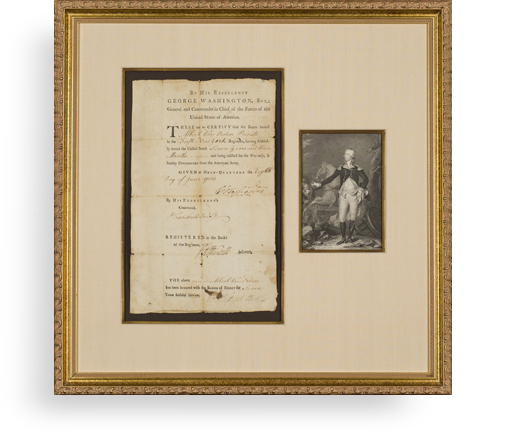President Franklin D. Roosevelt Appoints a Head of Selective Service for New York, Establishing the First Peacetime Draft in the U.S.


This act made possible the readiness of the United States when war came on December 7, 1941
- Currency:
- USD
- GBP
- JPY
- EUR
- CNY
This is our first document naming a state head of selective service pursuant to the 1940 peacetime draft
World War II broke out in Europe on September 1, 1939, and by late summer 1940 the Axis powers, led by Nazi Germany, had control of much of the continent. Britain was engulfed by...
This is our first document naming a state head of selective service pursuant to the 1940 peacetime draft
World War II broke out in Europe on September 1, 1939, and by late summer 1940 the Axis powers, led by Nazi Germany, had control of much of the continent. Britain was engulfed by the Blitz, Germany had annexed Czechoslovakia, and defeated and occupied Poland, Denmark, Norway, Belgium, the Netherlands, Luxembourg, and France. Yugoslavia and Greece were soon to come under attack, as was the Soviet Union. Italy was allied with Germany, as was Japan as of September 1940. And Japan had already taken much of China. Soon Romania and Hungary would join the Axis alliance. These were dangerous times.
The United States was trying to stay neutral, as many Americans were isolationists and wanted to avoid international entanglements. But a growing number of people, including President Franklin D. Roosevelt and many in Congress, had concluded that the United States would eventually be drawn into conflict with the Axis powers, and support for American intervention on behalf of European democracies was also growing. Yet the peacetime U.S. Army was small (270,000 as compared to Germany’s 6,000,000) and no mechanism existed to grow it quickly to meet any threat that would arise prior to a declaration of war.
On September 6, 1940, Congress passed the Selective Training and Service Act, and on September 16, 1940, President Roosevelt signed it into law. Also known as the Burke-Wadsworth Act, the Selective Training and Service Act of 1940 required that men between the ages of 21 and 35 register with local draft boards. It established the Selected Service System, and was the first peacetime draft in American history. This was a landmark event, as the U.S. had previously only drafted during wartime.
The draft began with the first registration on October 16, 1940, and the first men entered military service on November 18. By the early summer of 1941, President Roosevelt asked the U.S. Congress to extend the term of duty for the draftees beyond twelve months to a total of thirty months, plus any additional time that he might deem necessary for national security. On August 12, the United States House of Representatives approved the extension by a single vote. It was that close. Soon the U.S. Army had 1,500,000 men. It was ready for World War II when it hit American shores on December 7, 1941.
Document signed, Washington, December 2, 1940, appointing Gen. Ames Brown “State Director of Selective Service for New York….during the pleasure of the President of the United States.” This was a position of great responsibility, as New York was then the most populous state in the Union. Brown remained in this post all through the war until 1947.
This is our first document naming a state head of selective service.

Frame, Display, Preserve
Each frame is custom constructed, using only proper museum archival materials. This includes:The finest frames, tailored to match the document you have chosen. These can period style, antiqued, gilded, wood, etc. Fabric mats, including silk and satin, as well as museum mat board with hand painted bevels. Attachment of the document to the matting to ensure its protection. This "hinging" is done according to archival standards. Protective "glass," or Tru Vue Optium Acrylic glazing, which is shatter resistant, 99% UV protective, and anti-reflective. You benefit from our decades of experience in designing and creating beautiful, compelling, and protective framed historical documents.
Learn more about our Framing Services










































































































